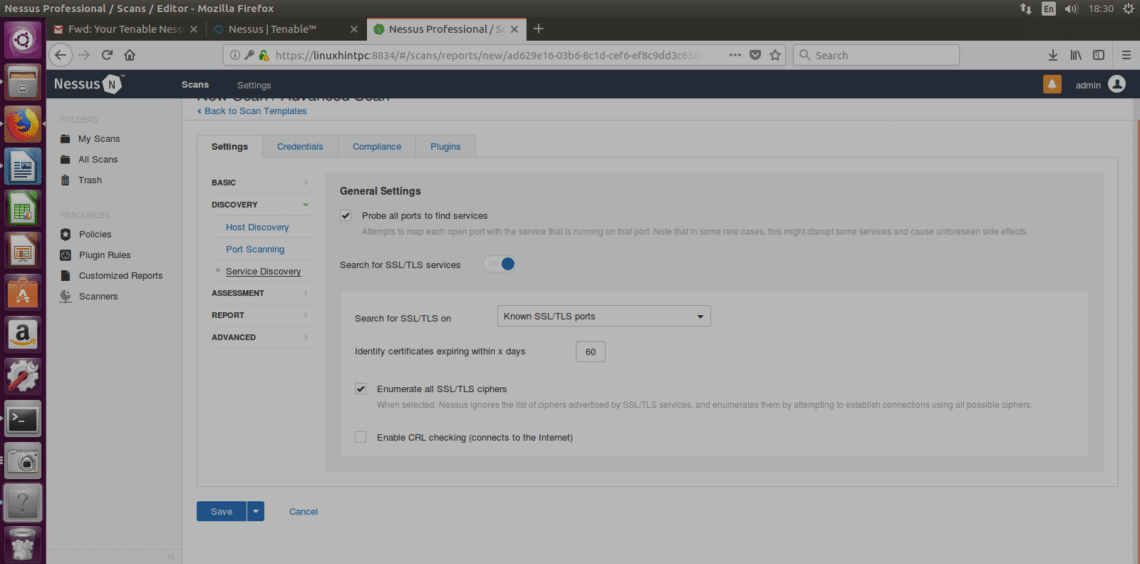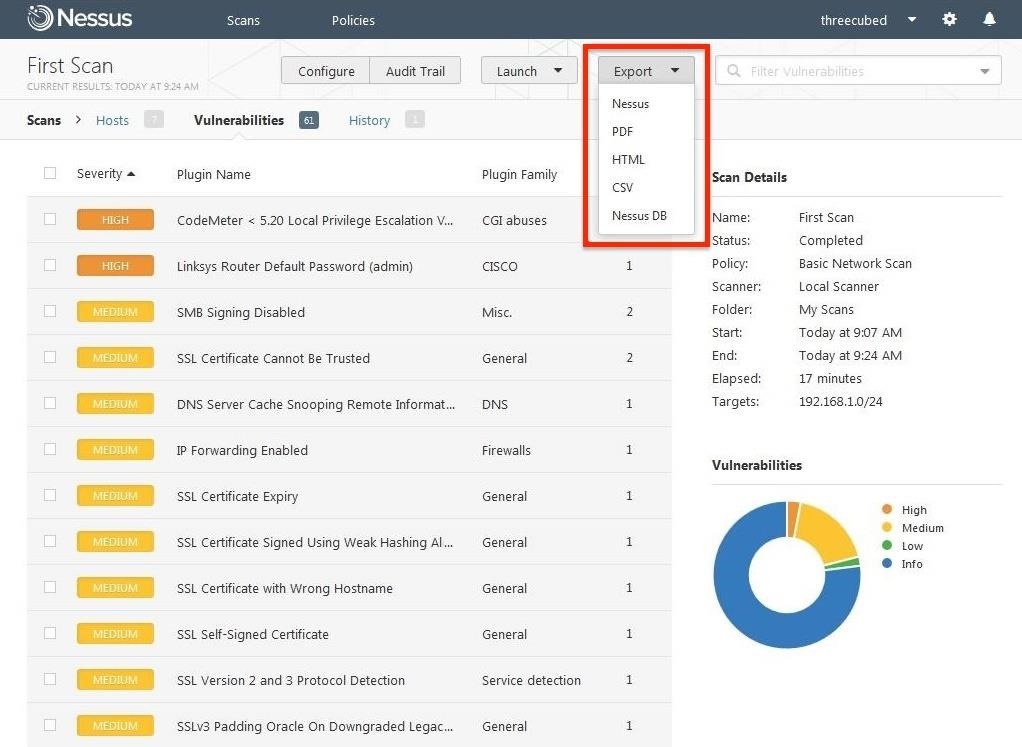
Managed Security Services Provider (MSSP).Los Angeles IT Support With 24/7 Monitoring.All-Inclusive Managed IT Services in Los Angeles.Install OpenVAS 9 with PostgreSQL in Ubuntu 18. Install OpenVAS 10 (GVM) on Debian 10 Buster How to Install RKHunter (RootKit Hunter) On Ubuntu 18.04 How to Install and Use Nikto Web Scanner on Ubuntu 18.04 How to Scan a Remote Host using Nessus Vulnerability Scanner Other Related Tutorials Learn how to scan assets/hosts using Nessus by following the link below The installation and setup is now complete and you can now embark on hunting vulnerabilities in your systems.


Once initialization is complete, the Nessus dashboard is launched that looks like the one below Once the Nessus setup is complete, it will start to initialize by downloading and compiling the plugins needed for scanning. To obtain the trail activation code, you need to register here if you have not done so.Ĭhoose the Scanner Type and enter the activation code.

Note that you need an activation code for you to register Nessus. You may also create a new Nessus user from Nessus CLI using the command below # /opt/nessus/sbin/nessuscli adduser Register Nessus Scanner Next, you are required to create an admin account. Login to UI, using the link as shown in the installation output: When you enter that link, add the SSL error that displays as an exception and proceed. To enable Nessus to start on system reboot, run the command below # systemctl enable nessusd Set up and Activate NessusĪfter initial installation you are required to set up and activate Nessus. # firewall-cmd -reload Start Nessus DeamonĪfter the installation is complete, you can start Nessus deamon by running the command below as shown in the installation output. If firewall is running, you need to open Nessus port 8834 to access the web User Interface.įor Ubuntu and simillar derivatives # ufw allow 8834įor CentOS and simillar derivatives # firewall-cmd -add-port=8834/tcp -permanent You can start Nessus by typing /bin/systemctl start rvice You can start Nessus Scanner by typing /etc/init.d/nessusd start - Then go to to configure your scannerįor CentOS 7 # yum localinstall Nessus-7.2.1-es7.x86_64.rpm. Unpacking Nessus Scanner Core Components.

If the installation is successful, you should see an output shown below. Once the download completes, run the installation as follows. Nessus installation package can be downloaded from here.


 0 kommentar(er)
0 kommentar(er)
